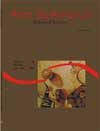Dynamics of the phytoplankton community and physical and chemical variables in experimental tanks with different organic manure
Abstract
The influence of different types of organic manure in the phytoplankton community is provided. Experiment was undertaken during 40 days in 1000L asbestos tanks. Tanks were fertilized with poultry (PO), pig (PI), cattle (CA) and rabbit (RA) manure, in a randomized design, with four treatments and five replications. First fertilization consisted of 50 g of manure, with 25 g fertilizations at seven-day intervals. Plankton was collected every three days by filtering 250 mL of water in a 20 µm net and fixed in 10 mL formaldehyde 2%. Qualitative and quantitative analysis was undertaken by optic microscope. At the same time, physical and chemical variables were monitored. Highest mean density of phytoplankton was detected with PO on the 40th day (26,842 org./L), followed by PI (17,164 org./L) on the 22nd day, RA (8,880 org./L) on the 28th day and CA (5,564 org./L) on the 22nd day. Genera Scenedesmus, Cyclotella and Acanthosphaera were predominant. pH values and electrical conductivity oscillated according to changes in phytoplankton densities. PO had the best values of parameters in most collections. Different treatments influenced density of phytoplankton groups. Highest density of algae was obtained by poultry manure, and successively by pig, rabbit and cattle manureDownloads
Download data is not yet available.
Published
2008-05-09
How to Cite
Faria, A. C. E. A. de, Hayashi, C., Soares, C. M., & Furuya, W. M. (2008). Dynamics of the phytoplankton community and physical and chemical variables in experimental tanks with different organic manure. Acta Scientiarum. Biological Sciences, 23, 291-297. https://doi.org/10.4025/actascibiolsci.v23i0.2685
Issue
Section
Biology Sciences
DECLARATION OF ORIGINALITY AND COPYRIGHTS
I Declare that current article is original and has not been submitted for publication, in part or in whole, to any other national or international journal.
The copyrights belong exclusively to the authors. Published content is licensed under Creative Commons Attribution 4.0 (CC BY 4.0) guidelines, which allows sharing (copy and distribution of the material in any medium or format) and adaptation (remix, transform, and build upon the material) for any purpose, even commercially, under the terms of attribution.
Read this link for further information on how to use CC BY 4.0 properly.
0.6
2019CiteScore
31st percentile
Powered by 

0.6
2019CiteScore
31st percentile
Powered by 











1.png)




3.png)













